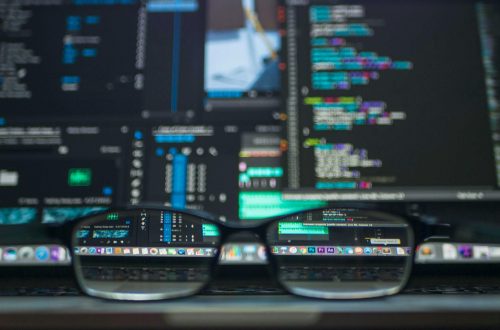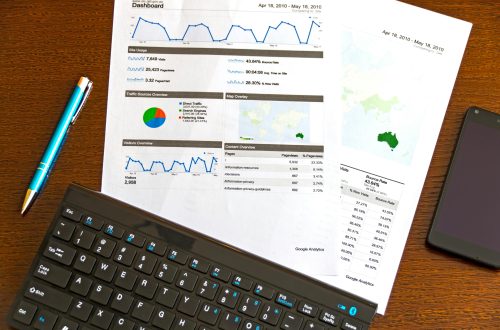
From Data Visualization to Insights: Leveraging AI and ML in Dashboard Development
Data Visualization means representing data in graphical representations, like charts, graphs, or maps, to understand it and get insights. In data visualization, AI significantly enhances input quality. This means that artificial intelligence helps in automating repetitive tasks, identifying hidden patterns, and delivering meaningful results from large datasets using AI algorithms. In today’s article, we will explore AI fundamentals and their link to data visualization.
Research in artificial intelligence (AI) is a multi-disciplinary pursuit. It creates machines or software capable of learning and making decisions for human beings. Such tasks range from natural language processing to machine learning to computer vision. Artificial Intelligence is a type of machine learning where the AI learns gradually by seeing data and then using that to make informed decisions, something which may vary as time goes on.
Understanding AI in Data Visualizations and Dashboards
The blood that has kept an enterprise alive for so long is nothing more than Data. It’s about collecting data regarding user behavior to make well-informed decisions. This data, however, can be daunting to look through. This is where data visualization comes into play, serving as a guiding light for organizations to better explore their massive sea of information and dig deep enough to know more or exactly what they should know for wiser choices.
Key Advantages of AI-powered Data Visualization:
- Deep Data Analysis
Raw data is like an unpolished gem, which is valuable but unclear. With AI, raw data can be refined into predictive insights. AI uncovers patterns, correlations, and trends that may elude human analysis.
- Interactive Visuals
Say goodbye to static charts and graphs. AI-powered data visualization brings data to life with interactive visuals, enhancing user engagement and creativity during data exploration.
- Personalized Recommendations
Have you ever received a perfect product suggestion while shopping online? That’s AI at work in data visualization. By analyzing user behavior, AI personalizes recommendations, offering tailored experiences such as shopping tips or curated content

AI Use Cases in Data Visualization:
- Finance: AI automates fraud detection, trend forecasting, and investment optimization using visual data representations.
- E-commerce: Predictive analytics recommend products based on customer behavior analysis.
- Marketing: AI generates visuals for social media analytics to aid targeted advertising.
- Sports: AI-powered augmented visuals showcase player and team performance.
- Healthcare: AI enhances clinical decision-making through interactive visuals in decision support systems.
Future AI is becoming integral to everything, and its role in data visualization is set to transform how businesses understand and engage with data. Imagine a future where AI enables complex data to be consumed through real-time visuals, and you can interact with it through conversational interfaces. This day is closer than we think.
AI-powered data visualization allows users to create dynamic, custom dashboards that efficiently predict future trends. By 2025, it’s predicted that nearly 30% of large businesses will use AI in predictive analytics to enhance key performance indicators and understanding.
Companies slow to adopt AI for data visualization risk falling behind their competitors. With AI becoming more accessible through scalable cloud platforms, businesses of all sizes can leverage valuable insights for growth. Enterprises should start experimenting with AI-driven data visualizations to stay competitive.

Advanced-Data Visualization Techniques Using AI
AI offers advanced methods to transform data visualization:
- Predictive Analytics: AI algorithms forecast future trends based on historical data, enabling visualizations to include predictive insights.
- For clustering: AI recognizes patterns and groups data points that are similar, so the visualizations reveal defined clusters or segments.
- Anomaly Detection: AI automatically detects anomalies or outliers in data, which can also be used to notify businesses about abnormal behaviors.
- Natural Language Generation: AI produces text summaries or explanations of visualizations, making data intuitive. These methods take data visualization beyond basic representations, uncovering hidden insights.
In the next part, we will focus on tools and methods to use AI-based visualization for your business visibility.
Leveraging AI for Data Visualizations and Dashboards
AI streamlines the process of deriving insights from visual data representations such as graphs, charts, and dashboards, making them efficient, reliable, accurate, and deep. Natural Language Generation (NLG) boils down complex data into language that helps non-technical users understand key findings, even without specialized expertise. AI-driven Auto-Dashboards recommend relevant metrics and visualizations based on data evaluation for automated dashboard setup.
Data Preprocessing and Cleaning
AI automates preprocessing tasks like error detection and correction, ensuring clean, reliable datasets, especially in large datasets where human errors are harder to catch. Missing Data Management: AI predicts and fills in missing data based on patterns found in datasets. AI also standardizes mixed data formats, making data integration and analysis more seamless across sources. These AI techniques empower organizations to build advanced data visualizations that offer new perspectives, enhancing decision-making across platforms.
Even the most complex data can be made human-readable without any specific knowledge. AI makes this easier by reading intricate datasets and finding relationships that may be tough to locate using traditional analysis.

Data Preprocessing and Cleaning
AI automates preprocessing tasks like error detection and correction, ensuring clean, reliable datasets, especially in large datasets where human errors are harder to catch. Missing Data Management: AI predicts and fills in missing data based on patterns found in datasets. AI also standardizes mixed data formats, making data integration and analysis more seamless across sources. These AI techniques empower organizations to build advanced data visualizations that offer new perspectives, enhancing decision-making across platforms.
Even the most complex data can be made human-readable without any specific knowledge. AI makes this easier by reading intricate datasets and finding relationships that may be tough to locate using traditional analysis.
Data quality
Data should reflect a true representation of the actual data and allow visualization of meaningful results. Poor data quality leads to ambiguity. One of the biggest advantages AI provides is in maintaining high-quality data by automating cleaning and preprocessing for responsible visualizations.
IT dependency
Most companies are heavily dependent on their IT teams to manage, analyze, and secure data, which slows decision-making. Tools and features powered by AI make it possible for non-technical users to build and control their visualizations without relying on IT.
Adaptable dashboards
Each user or department might have different data dimensions and variables needed. Modifying dashboards on an ongoing basis can be difficult. AI helps craft dashboards to meet the needs of specific user profiles, providing real-time customization that would be otherwise impossible.
Timely reports
In a fast-paced world, decision-making with outdated data leads to poor outcomes. Traditional visualization methods struggle to provide real-time insights. AI enables real-time processing and handling, ensuring that reports and visualizations always stay updated as the context changes.
Conclusion
By addressing these challenges, AI enhances the functionality of data visualizations and dashboards. The artificial intelligence is helping to make them more responsive, accurate, and user-friendly for businesses focused on data-driven decision-making.






2 Comments
Pingback:
Pingback: